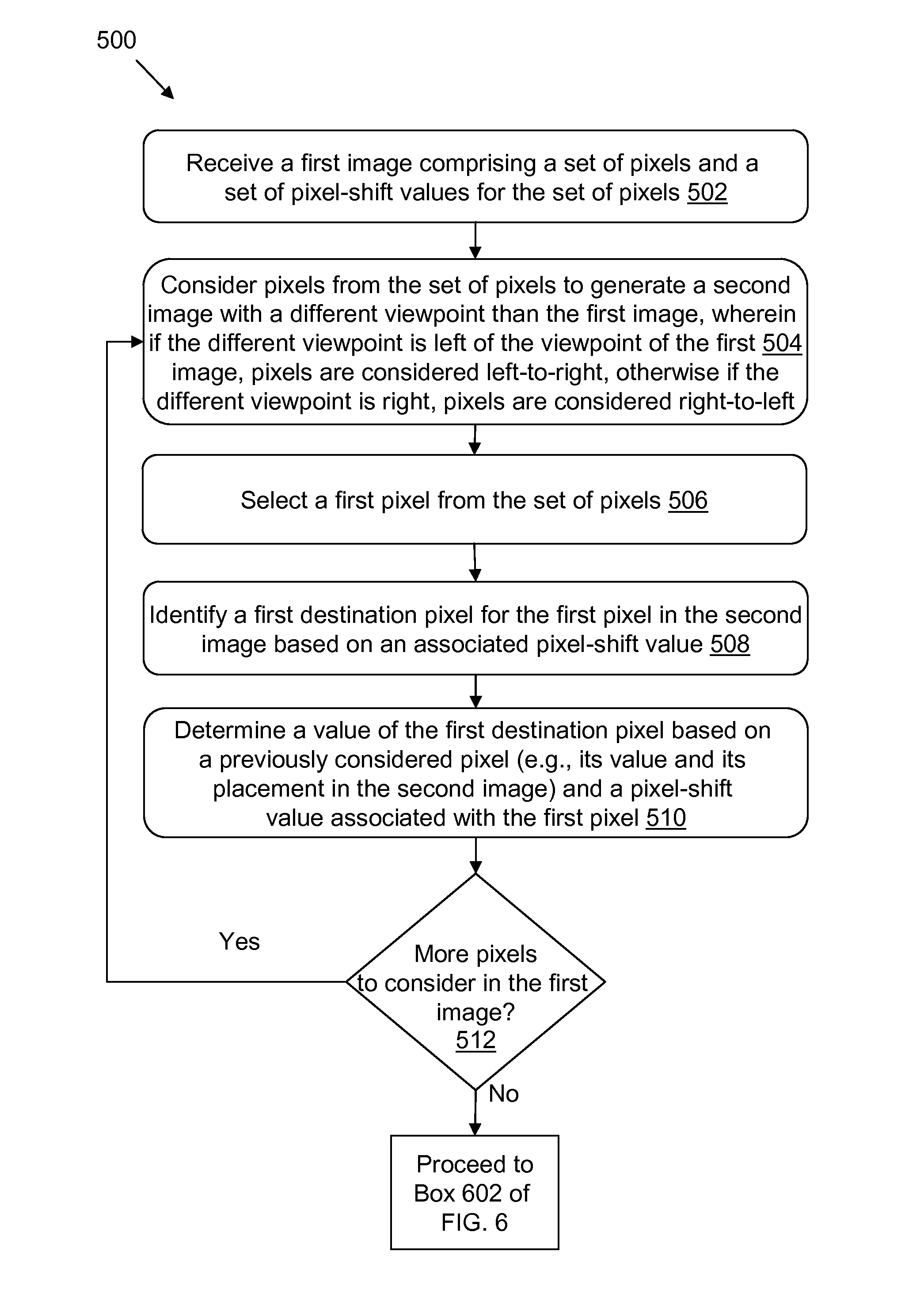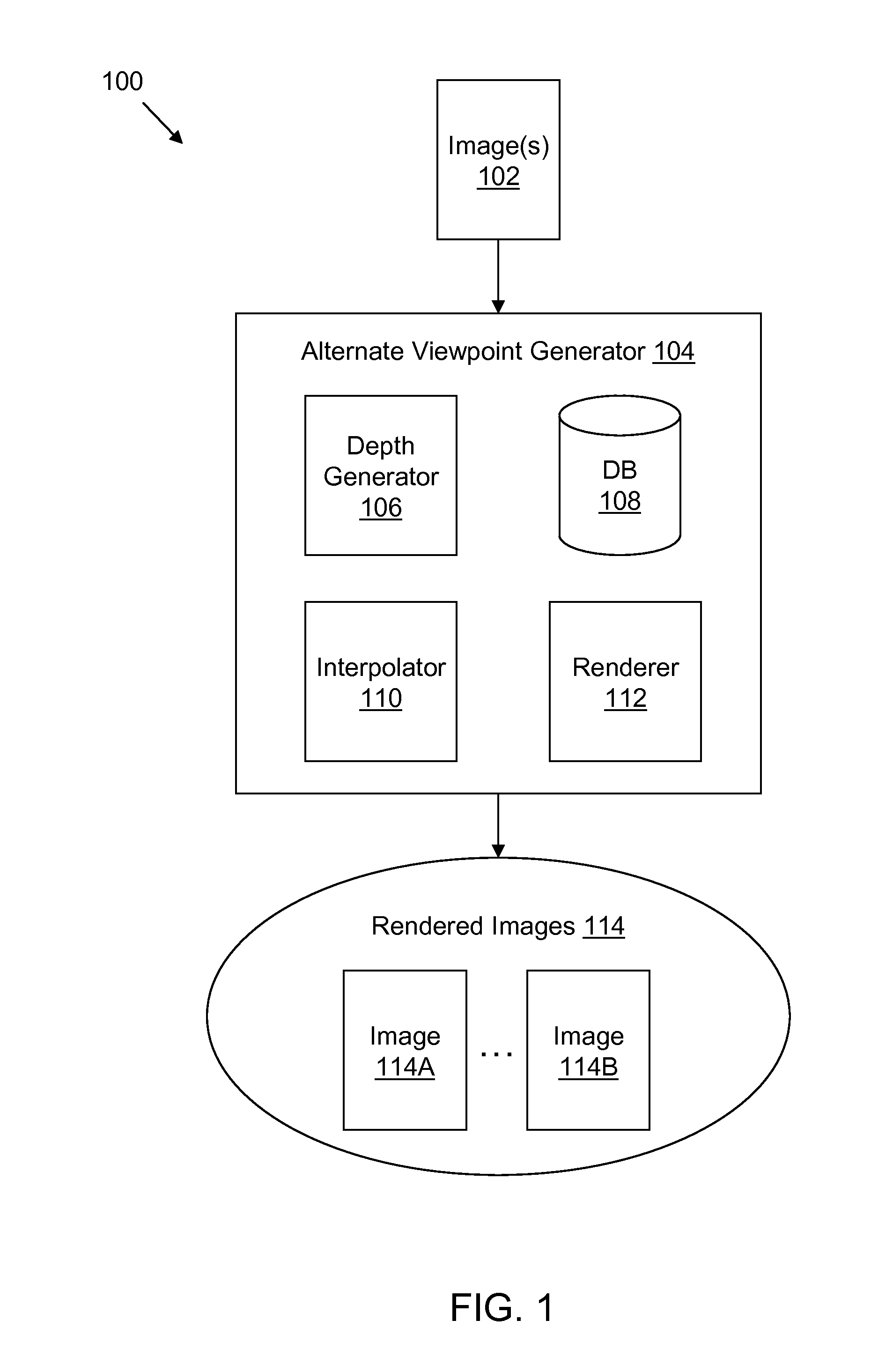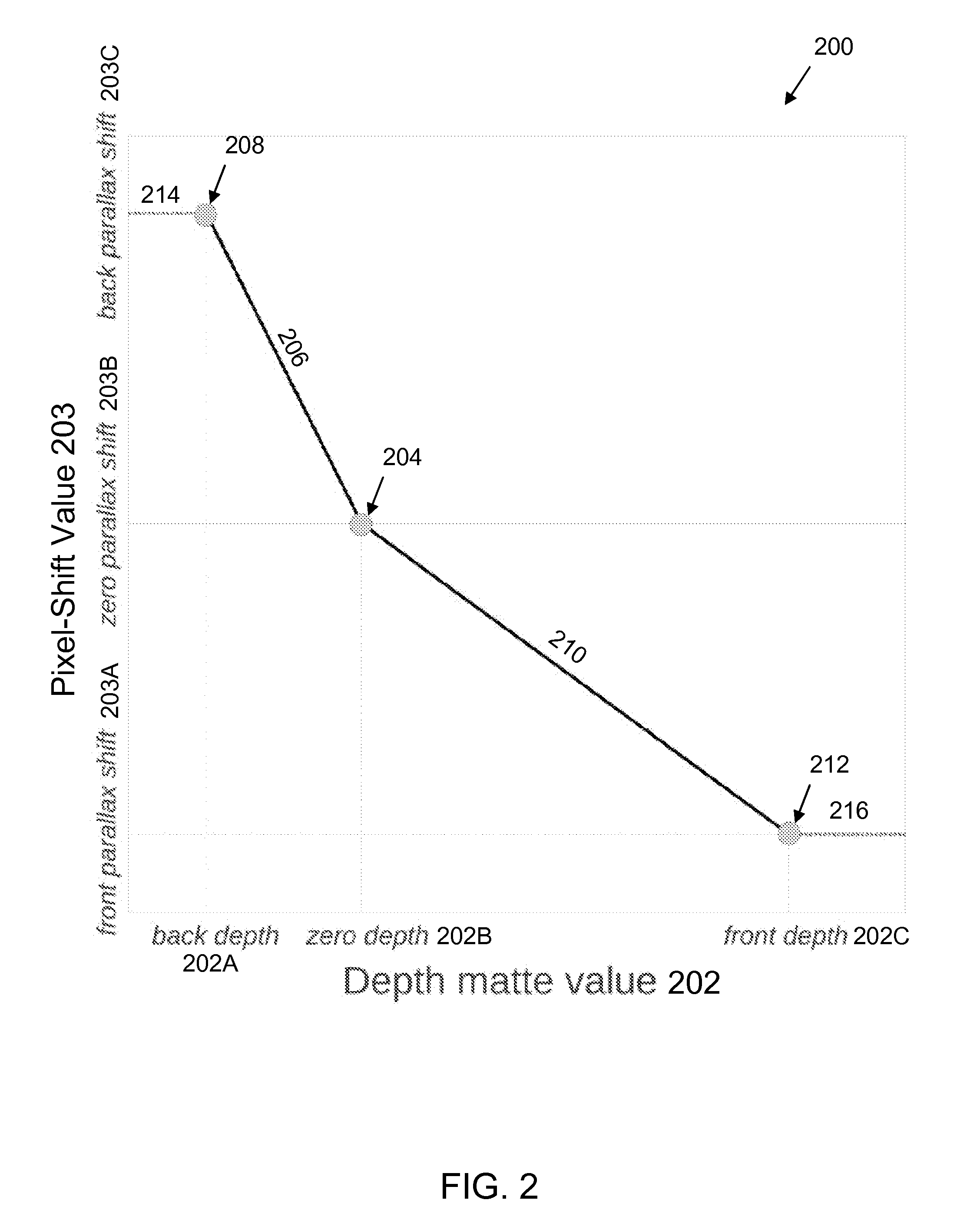Alternate Viewpoint Rendering
a rendering technique and viewpoint technology, applied in the field of alternative viewpoint rendering, can solve the problems of excessive distortion of alternate viewpoint images, delays in processing speed and accuracy of alternate viewpoint images (the rendered images), and cumbersome shooting films with two cameras for stereo presentation, so as to avoid unnecessary computation and processing, and improve efficiency.
- Summary
- Abstract
- Description
- Claims
- Application Information
AI Technical Summary
Benefits of technology
Problems solved by technology
Method used
Image
Examples
Embodiment Construction
[0029]In general, computerized systems and methods are provided for generating images with alternate viewpoints from an original image. Depth information (e.g., a depth matte) is generated for the original image. Pixel-shift values that indicate how to transform the depth information into an image (e.g., an image displayed in the real world) are generated based on the depth information. The pixel-shift values and the original image are used to generate the alternate viewpoint images.
[0030]Although the specification and / or figures describe(s) the techniques in terms of particular ordered steps, these techniques work equally as well using different orders for the steps (and / or different steps) and are therefore not intended to limit the computerized systems and methods described herein.
[0031]FIG. 1 is a diagram that illustrates a computerized system 100 in which an alternate viewpoint generator 104 (also referred to herein as “generator 104”) converts an original (or source) image int...
PUM
 Login to View More
Login to View More Abstract
Description
Claims
Application Information
 Login to View More
Login to View More - R&D
- Intellectual Property
- Life Sciences
- Materials
- Tech Scout
- Unparalleled Data Quality
- Higher Quality Content
- 60% Fewer Hallucinations
Browse by: Latest US Patents, China's latest patents, Technical Efficacy Thesaurus, Application Domain, Technology Topic, Popular Technical Reports.
© 2025 PatSnap. All rights reserved.Legal|Privacy policy|Modern Slavery Act Transparency Statement|Sitemap|About US| Contact US: help@patsnap.com



